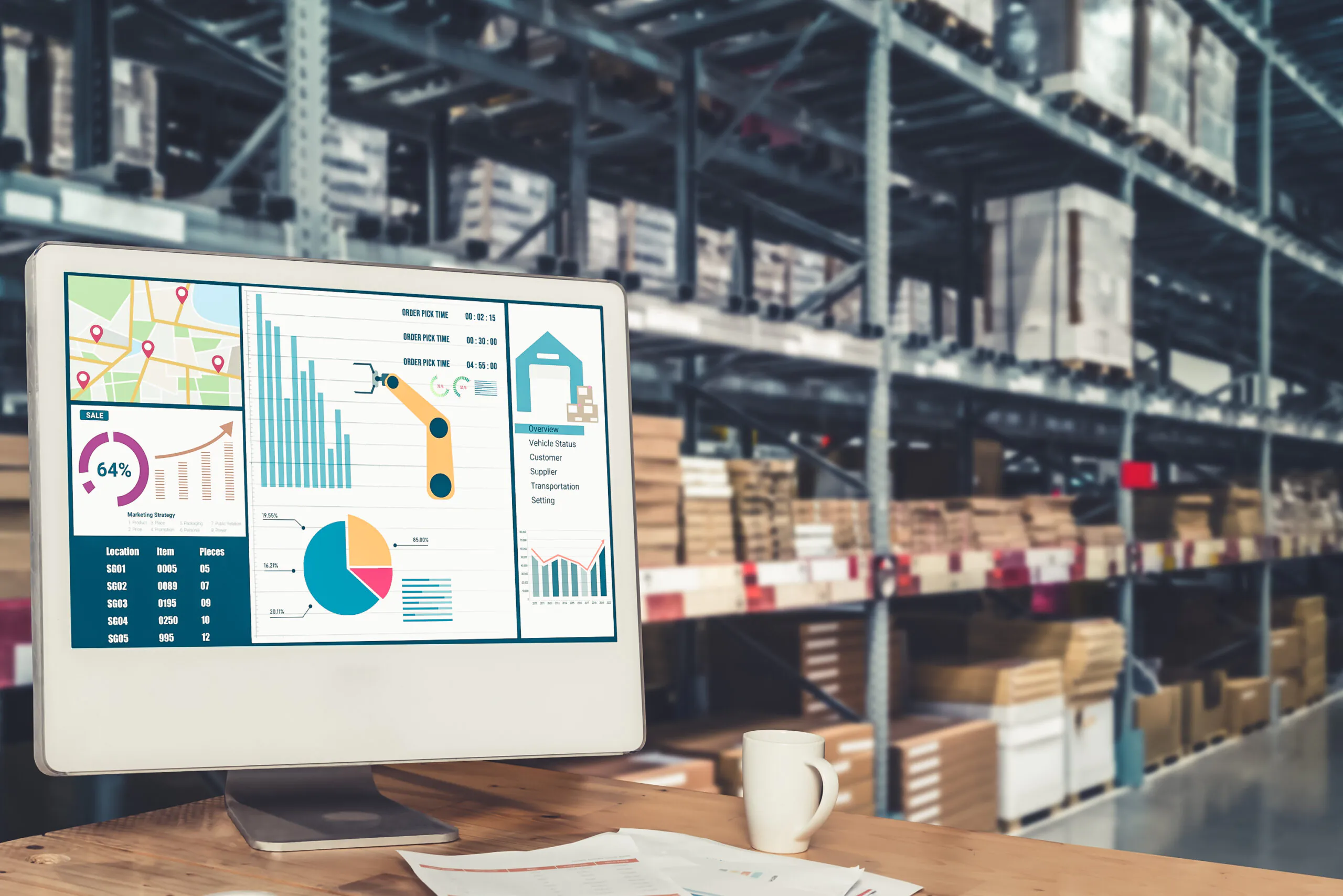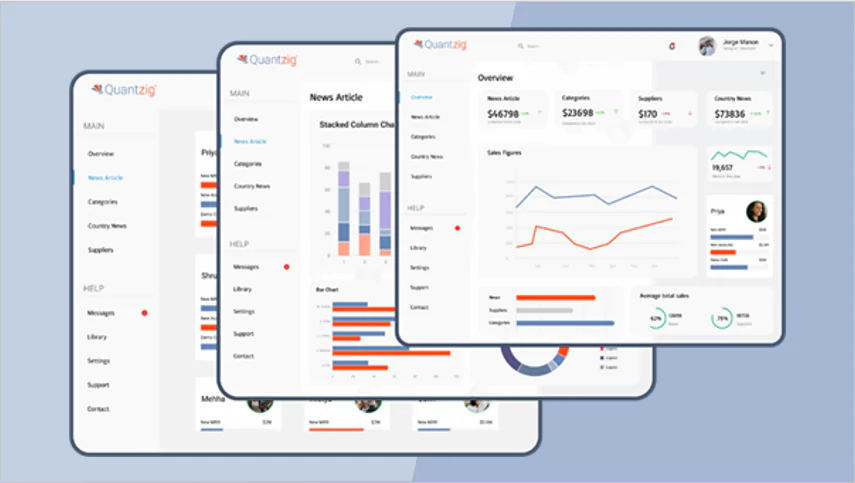The rise of digital twin data analytics is reshaping industries by merging physical and virtual worlds to enhance predictive maintenance and operational efficiency. This powerful approach leverages real-time data, simulation, and analytics to provide actionable insights, driving smarter decision-making.
In this blog, we’ll explore the fundamentals of digital twin technology, its data-driven applications, and how it is transforming industries with advanced analytics.
Book a demo to experience the meaningful insights we derive from data through our analytical tools and platform capabilities. Schedule a demo today!
Request a Free DemoTable of Contents
What is Digital Twin Analytics?
A digital twin is a virtual representation of a physical object, system, or process, continuously updated with real-time data through IoT and advanced sensors. Digital twin data analytics uses this real-time data to perform simulations, predictions, and optimizations.
Key Components of Digital Twin Analytics:
| Component | Description |
|---|---|
| Digital Twin Modeling | Creation of the virtual representation of assets or systems. |
| Data Integration | Combining IoT, cloud, and edge data streams into the digital twin. |
| Data Visualization | Presenting complex data through interactive dashboards and visual models. |
| Predictive Analytics | Using machine learning (ML) and AI to forecast potential failures and trends. |
| Simulation Analytics | Testing scenarios in a risk-free virtual environment. |
How Digital Twin Analytics Transforms Predictive Maintenance
Predictive maintenance ensures the longevity and reliability of machinery by anticipating failures before they occur. Here’s how digital twin technology enhances this process:
1. IoT and Digital Twin Analytics
Digital twins pull real-time data from IoT devices, offering continuous monitoring of equipment performance.
2. Machine Learning in Digital Twin Analytics
With ML algorithms, digital twin performance analytics can identify anomalies and predict failure points with high accuracy.
3. Digital Twin Simulation Analytics
By simulating different operating conditions, businesses can determine the best maintenance schedules and operational strategies.
4. Digital Twin Insights and Analytics
Smart analytics provide actionable insights for maintenance teams, reducing downtime and costs.
| Traditional Maintenance | Digital Twin Predictive Maintenance |
|---|---|
| Reactive approach (fix after failure) | Proactive approach (prevent failure) |
| Periodic, fixed schedules | Real-time, condition-based schedules |
| Higher downtime and costs | Lower downtime and optimized costs |
Enhancing Operational Efficiency with Digital Twin Data Analytics
Operational efficiency involves optimizing processes, reducing waste, and enhancing productivity—and digital data twin analytics plays a pivotal role in achieving these goals. By leveraging data-driven digital twin models combined with big data, industries can gain a comprehensive view of their operations, making it easier to identify bottlenecks and inefficiencies. Real-time digital twin analytics further enhances agility by delivering immediate insights that support rapid responses to changing conditions. Additionally, cloud-based digital twin analytics offers scalability and enables seamless data sharing across teams and geographic locations, ensuring consistency and collaboration.
Complementing this, edge computing allows data to be processed locally, significantly accelerating decision-making for time-sensitive operations. Together, these technologies empower businesses to streamline operations, improve responsiveness, and drive continuous improvement.
Beyond the Blueprint: Powerful Uses of Digital Twin Analytics
Digital twin analytics is revolutionizing diverse sectors. Here are key applications:
| Industry | Use Case | Benefits |
|---|---|---|
| Manufacturing | Predictive maintenance, production optimization | Reduced downtime, higher output |
| Healthcare | Virtual modeling of organs, personalized treatment plans | Enhanced diagnosis, better outcomes |
| Energy | Real-time monitoring of power grids, wind turbines | Increased reliability, efficiency |
| Transportation | Fleet management, traffic flow simulation | Reduced congestion, optimized routes |
| Construction | Smart building management, structural health monitoring | Lower operational costs |
Key Benefits of Advanced Digital Twin Analytics
Advanced digital twin analytics offers a range of key benefits that significantly enhance operational effectiveness. One of the primary advantages is improved predictive maintenance, where advanced forecasting powered by predictive analytics helps anticipate equipment failures before they occur. This leads to reduced downtime and more efficient maintenance scheduling. Additionally, digital twins support enhanced decision-making by providing comprehensive insights through advanced data visualization, enabling stakeholders to make informed, real-time choices. Another critical benefit is optimized performance, achieved through continuous monitoring and dynamic adjustments based on performance analytics.
This level of oversight not only improves efficiency but also drives higher output quality. Furthermore, digital twin data analytics contributes to cost savings by minimizing waste and operational disruptions, leading to leaner, more efficient processes. Lastly, scalability is a significant strength, with cloud-based digital twin solutions allowing businesses to easily expand and manage large, complex systems across various locations and functions.
From Hurdles to Horizons: The Evolving Landscape of Digital Twin Analytics
Implementing digital twin analytics presents several challenges and opportunities. One of the primary challenges is data integration, as harmonizing information from diverse sources continues to be complex and resource-intensive. Additionally, security concerns are a significant issue; the real-time data exchange between physical assets and their digital counterparts necessitates strong cybersecurity frameworks to protect sensitive information and ensure system integrity. Looking ahead, several emerging trends are poised to shape the future of digital twin data analytics. Smart digital twin analytics, powered by artificial intelligence, will enable more autonomous and adaptive decision-making.
The integration of data science with digital twin technology is expected to deliver deeper, more actionable insights by leveraging sophisticated analytics tools. Moreover, the widespread adoption of edge computing will support faster, localized data processing, enhancing the responsiveness and efficiency of digital twin systems. Together, these trends signal a transformative future for digital operations and analytics.
Conclusion
Digital twin data analysis is a game-changer, driving industries towards greater efficiency and reliability. From cloud-based digital twin analytics to machine learning in digital twin analytics, this technology offers unparalleled opportunities to innovate and excel. Embracing these tools ensures businesses stay competitive in an increasingly data-driven world.
Are you ready to unlock the full potential of digital twin technology analytics in your operations? Start today by integrating smart solutions that bridge the gap between physical and digital systems.
Transform your retail strategy today! Contact Quantzig for a free consultation and take the first step toward an advanced supply chain analytics.
Start your free trial



